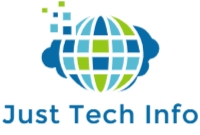Daily, software developers furnish various applications and deploy them to the end-users. But, have you ever wondered how engineers are creating such alluring and robust apps capable of handling all our requests?
Let’s unfold the strategy behind it.
The one prime pillar supporting it is the Software Development Methodology. Development approaches provide a roadmap, providing an in-depth knowledge of all the steps to build the application. Without a methodology, software development can be a complex and time-consuming task.
Whether someone is a fresher, a software consultant, or a development expert, following a software development methodology is obligatory for all.
So, let’s move further and discover about it in more detail.
Table of Contents
Exploring the fundamentals of Software Development Methodology
There are various kinds of Software Development Approaches, and each offers its own set of phases and steps to follow.
However, some fundamental steps are at the core of every development methodology and are necessary for every expert to follow them.
Let’s explore each phase one by one.
Phase 1: Information Gathering
Before starting any project, collecting and organizing necessary details is the most basic process, and the same is the case with software creation.
In this phase, you must interview your client and all the stakeholders to understand their demands.
If you are modernizing a system, you should gather details about its drawbacks and challenges faced by your ally. In addition, you must collect project budget and time-to-market data for better planning.
Phase 2: Planning
The information collected in the first phase is the primary asset of the Planning stage. You will use it to determine the resource requirement, risks, and project schedule. In addition, you will conduct a feasibility study to have an accurate budget structure. As a result, you will have all the essential charts, documents, and graphs for initiating the software development.
Phase 3: Designing
Before actual development, developers consider crafting low-level and high-level designs as an essential step. It aids the experts in having a precise understanding of the application’s interface, backend logic, features, and architectures. It works as a blueprint for the development team. In some software development methodologies, there is an extra phase of creating prototypes, helping to determine the needs of the stakeholders and to provide a personal touch to the business solution.
Phase 4: Development
At this stage, developers start furnishing the frontend and backend of the application. The primary purpose of this step is to integrate all the APIs, plugins, and widgets in the app and produce a full-fledged solution.
Moreover, engineers perform unit testing to remove potential loopholes, errors, and bugs. It is the most time-consuming task in all the phases of a development mechanism. It is a continuous activity until the software doesn’t meet all the client requirements.
Phase 5: Testing and Deployment
Once the application moves to phase five, testers come into the role of checking its functionality in different environments.
The main objective of testing the application is to align its security standards with NIST and ISO and ensure it is working as per the customer’s needs. If the application satisfies all the testing KPIs, the only client gets delivery. Further, after all the necessary contract signing, the application is moved to the production environment, where it is available to the end-users.
Why are Methodologies crucial for Software Developers?
Now, we know about the basics of Development methodologies. It is also essential to understand why you should align your project with it.
- It helps define all the crucial steps leading to building a top-notch business application.
- Assures to produce a stable system, covering every client requirement.
- Provide a clear understanding of the procedures to follow for achieving the project goals.
- Aids to divide the project into different phases, reducing the effort and providing a better insight into the timeline.
- It helps to determine the project budget and plan everything accordingly.
- It leads to identifying project risks in the initial stage and provides time to create a mitigation plan.
The Most Common Approaches a Software Consultant will prefer
Based on project scope, customer demands, and time-to-market, software consultants will prefer the following software development methodologies.
Waterfall
The waterfall is the first and most significant development approach, following a set stage in a streamlined manner. If your project has a fixed scope and requirements, it is the perfect choice for you. The waterfall can assuredly support your project for fabricating simple applications with minimal functionality and budget.

It consists of only the fundamental phases, including Analysis, Requirement gathering, Design, Development, Testing, and Maintenance.
In this model, the output of the first phase is the input of the next step. For instance, the design stage’s output will be the primary input for the development stage. All the developers will work according to the architecture design for building the application.
Agile
Whenever you have a large-scale project with a flexible schedule, budget, and requisites, then every software consultant will appraise Agile as the best option. It is the most scalable and flexible development approach, assuring to cover edge-to-edge dynamic requirements at any stage. Agile provides the leverage of sprints or small iterations, helping the experts to embed dynamic user needs. Each iteration consists of design, develop, test, deploy and review phases.
Let’s have a closer look at its works.
At first, the project team creates a plan and starts working according to it. In the meantime, the client is free to analyze its business and add more functionalities to the software in development. While the team completes the initial needs, they are in the first iteration. Further, when the team receives new customer requirements, they will start a new iteration to add the components for fulfilling them.
All of this is a consistent process until the client is not satisfied.

For aligning your project with Agile methodology, the client should have a high-expense statement, as resource requirement is not constant.
Also, it can be a suitable option for large-scale enterprise applications, where business strategies are dynamic.
DevOps
DevOps is quite similar to the agile methodology.
The only difference between them is that In DevOps, the development and operations team works together. Whereas, in Agile, the Operations team deploys the applications after developers hand them the final solution. If you have a shorter time-to-market, you must select DevOps for your project. It also works in small sprints and provides the benefits of deploying every modification directly after its development completion.
When the software engineer submits a pull request in the master directory, the testers simultaneously check and verify it. Further, the operations team consistently deploys the new code in a production environment.
As a result, every update, feature, and component gets reflected in the live application’s minimum time.

Rounding Up
Software Development Methodologies are as crucial as selecting the right technology for your software project.
By aligning development procedures with a reliable approach, you can ensure a cutting-edge solution for your client. Also, you can create an application within the cost and time constraints with the help of planning and information-gathering procedures.
Moreover, with a basic understanding of the Waterfall, Agile, and DevOps mechanisms, you can effortlessly build any mobile, desktop, native and hybrid application.
You may also read What is Mobile Application Development?






